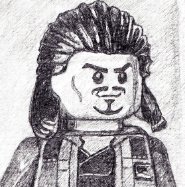
Couple minutes later Dylan and I had it playing on the projector in the Gallatin lounge. Then they announced that they were about to show the teaser. One of the grad students turned off the lights in the room (because who cares if a couple people are studying, this is Star Wars).
Dude.
Dude. Dude. Dude.
There were cheers. There was swearing (hey, that opening shot of the crashed Star Destroyer). And there was a lot of pure joy.
And Katie walked in a minute later and loudly said "Neeeeeerds."
This week's Essay, Not Rant is gonna be about it, because, duh, but gut reactions:
[redacted] YES DAISY RIDLEY SEEMS TO BE THE MAIN CHARACTER
And she looks like she can kick butt
Stormtroopers. Dude
The villain looks great
I really want Gwendolyn Christie to be in the chrome Stormtrooper armor
FALCON
X-Wings in atmosphere
Look at the mood of it! It's so uncynical
HAN SOLO AND FRIGGIN' CHEWBACCA
- Read more...
- 8 comments
- 731 views

